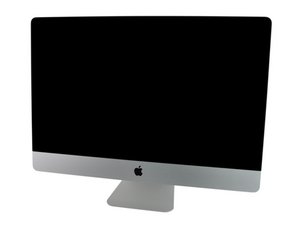Faulty CPU/ODD sensors or fans after Dual Drive Kit Upgrade
Hello,
I performed the Dual Hard Drive Kit upgrade as suggested in the guide at Installing iMac Intel 27" EMC 2429 Dual Drive Kit (HDD or SSD)
I followed the steps precisely during the whole process.
After the second drive (SSD) was installed, I booted up the iMac and heard loud fan noise after a few seconds. Both CPU and ODD fans are running at full speed.
I have tried resetting SMC/PRAM, but to no avail. I reassembled the logic board twice, with and without the Dual Drive Kit upgrade. It still didn't fix the problem.
So, I believe something somewhere has gone wrong and I need to identify the problem and fix it.
I have also noticed that it is not just the fans that are loud, my game which I play every day at 30fps, is crawling at 6-7fps after the upgrade (still utilizing the HDD though, not the SSD).
Running the Apple Hardware Test revealed failure with TA0P code, which indicates Ambient Temperature sensor/connector failure according to some google search results.
Moreover, Temperature Gauge Pro app reports the following:
ODD 3729 RPM
HDD 1097 RPM
CPU 3917 RPM
Fan Diagnostics: These fans appear to be not working properly : ODD
Sensor Diagnostics: These sensors appear to be not working properly : CPU
Some further Googling has revealed that this person had a similar problem and flipping the LCD Thermal Sensor Cable fixed it for him: http://forums.macrumors.com/showpost.php...
However, I'm not sure which of the cables mentioned in the iFixit guide are the LCD Thermal Sensor Cable, for me to give it a go (I doubt any of the cables can be flipped on this model though).
Any help would be appreciated.
TLDR:
- After installing 2nd drive (SSD) on 2011 27'' iMac,
- CPU and ODD fans are running at full speed, HDD fan at normal.
- Degraded gaming performance at 6-7fps.
- Failure in Apple Hardware Test with code TA0p.
- Something somewhere went wrong in assembling/disassembling (perhaps).
Thanks!
Update (02/25/2014)
I removed the LCD panel from the iMac and booted it with external Cinema Display. The fans are still loud. So I doubt that the problem is with LCD sensor. Maybe I should pay attention to the Ambient Sensor/connector, since the AHT failure also reported a fault with that.
좋은 질문 입니까?


 3
3  2
2  1
1 



댓글 4개
Hi, I have the same issue with ODD and CPU fans in my imac 27 mid 2011,
Do you find any solution so far? Thanks
Meaposte 의
10/17/15 See my answer below
mayer 의
Did you ever resolve this Gurpartap? I'm experiencing the same issue after adding an SSD to my mid-2011 27" iMac (although I also replaced the main HDD with a new HDD at the same time).
I've taken the SSD out and put the original HDD back in, and still get the TA0P failure in Apple Hardware Test.
Paul Kelly 의
@itspaulkelly Haven't found any solution yet. Tried Apple service centers, was advised that I replace the whole logic board. Meanwhile, "Macs Fan Control" app is keeping it quiet. It's the only app that has been able to control the fans in my case.
Gurpartap Singh 의